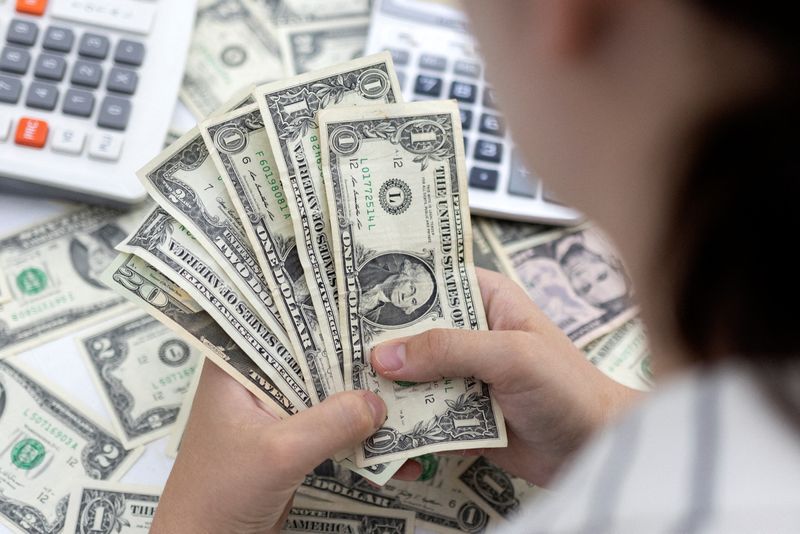Author: Sarupya Ganguly
BANGALORE (Reuters) – The U.S. dollar will tighten its grip on global currency markets with nothing to stop its impressive rise, with a significant number of currency forecasters polled by Reuters expecting it to rise to parity with the euro in 2025.
The dollar rose more than 7% against a basket of major currencies last year and narrowly missed an 8% gain in 2022 – a seven-year high – and put the euro on the brink of dollar parity and a more than two-year low. January 2 at $1.02.
While forecasters in Reuters polls – longtime supporters of a weaker dollar – were largely wrong in their median forecasts for the past year, additional questions, especially about risks to those estimates, reflected the currency’s relentless rise.
This was largely due to the dollar rising nearly 8% in the final quarter of 2024, helped by robust and often unexpected US economic strength.
The US Federal Reserve’s signal in December that it was in no hurry to cut interest rates further, as well as inflation concerns rooted in President-elect Donald Trump’s proposed tariff and tax policies, have only helped consolidate those gains.
“This may sound like a broken record, but we believe the dollar will continue to be quite strong for the next few months. Even if you think about what potential new policies the new administration might introduce, it should prioritize the dollar. in some ways it feels like “there is no alternative,” said Paul Mackel, global head of FX at HSBC.
Interest rate futures are currently fully priced for just one more Fed rate cut by the end of 2025 and are hesitant on the possibility of a second, compared with speculation that the European Central Bank will cut rates by nearly 100 basis points by then.
That, coupled with the appeal of higher long-term U.S. Treasury yields and expectations of larger rate cuts from other major central banks, will likely limit the dollar’s decline, currency strategists said in a Reuters poll Jan. 3-8, showing subtle signs of a shift in stance.
The euro, currently at $1.03, rose a modest 1% over the next three and six months to $1.04 and then to $1.05 by the end of the year, according to the average opinions of more than 70 strategists, notably lower than expected a few months ago.
The latest positioning data from the Commodity Futures Trading Commission also showed speculators increased their net long dollar bets to the highest level since May.
“When you look at other currencies – their fundamentals, yields and other sources of uncertainty around them – you still come back to the dollar. We may get windows where the market is happy to look for alternatives, but that will prove to be temporary and this year will be another example of that,” said HSBC’s Makel.
When asked whether the euro would reach parity against the dollar this year, a nearly two-thirds majority, 24 of 38 respondents to a follow-up question, said it would.
Most of them said they would do so in the first half of this year.
“We are maintaining a target of $1 per euro for the second quarter, although we recognize the risk that this target could be reached sooner… while the dollar may end the year below its highs, we expect the theme of broad US dollar strength to remain strength.” strength,” said Jane Foley, senior currency strategist at Rabobank, the most accurate forecaster of the euro-dollar rate in Reuters polls in 2024, according to calculations by LSEG StarMine.

However, only a fraction of the banks surveyed, about one-fifth, predicted in their end-of-period forecasts that the euro would match or fall below the dollar in the next three, six or 12 months.
(As for other stories from the January Reuters currency survey:)


